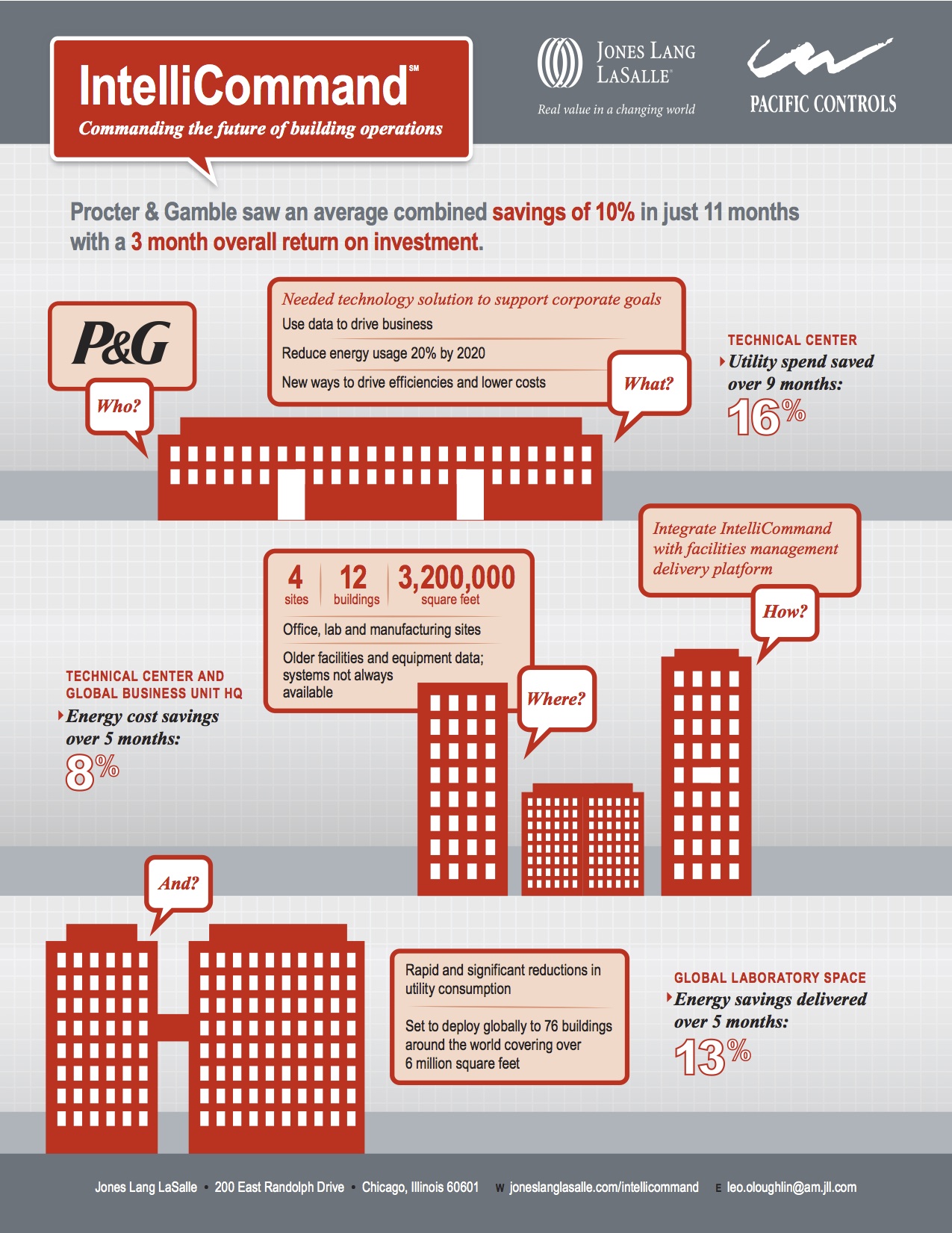Embedding resilience into building solutions is the theme at the BUILDINGChicago/Greening the Heartland expo and conference, September 9-11 at the Holiday Inn Chicago Mart Plaza. From regional success stories to emerging technology presentations, the 70+ continuing education sessions will explore the various ways that sustainable construction and design adds value to the built environment.
One not-to-miss presentation, on Monday, September 9 from 1:30-2:30 p.m., will feature Procter & Gamble’s smart building management program. The premise of this "Smart Buildings and Sustainability" presentation is that smart building technology can lead to energy reductions of 15 to 20 percent—even in already-efficient buildings—through continual commissioning and identification of equipment malfunctions that would not otherwise be detected by building engineers.
How so? Recent advancements in technology are allowing owners to connect with facilities as never before, leveraging existing automation systems to achieve cost-effective energy improvements. Just as smart buildings are getting smarter, so is the ability to manage them by using real-time data to drive more informed decision-making and execution. Technology solutions that were once cost-prohibitive have now become affordable and are driving measurable returns. Utilities are investing in smart grid technology that will further enhance the value of smart building systems.
Using P&G’s IntelliCommand case study, this presentation will provide examples of how building data analytics enabled facilities managers to quickly find and address energy usage anomalies, saving more than the cost of implementation in the first year, and paving the way for LEED certification.
In terms of resilience, smart building technology delivers—with cost efficiency, business risk management tools, increased operational effectiveness and improved ability to meet environmental goals. For more information, register for the conference, or download the P&G case study.
Related Stories
| May 29, 2014
7 cost-effective ways to make U.S. infrastructure more resilient
Moving critical elements to higher ground and designing for longer lifespans are just some of the ways cities and governments can make infrastructure more resilient to natural disasters and climate change, writes Richard Cavallaro, President of Skanska USA Civil.
| May 29, 2014
Wood advocacy groups release 'lessons learned' report on tall wood buildings
The wood-industry advocacy group reThink Wood has released "Summary Report: Survey of International Tall Wood Buildings," with informatino from 10 mid-rise projects in Europe, Australia, and Canada.
| May 29, 2014
Five finalists, including SOM and Zaha Hadid, chosen in competition for Sweden's tallest skyscraper
In Sernecke's competition to design Sweden's tallest skyscraper, five finalists have been selected: Manuelle Gautrand Architects, Ian Simpson Architects, SOM, Wingårdhs Arkitektkontor, and Zaha Hadid Architects.
| May 29, 2014
Retail renovation trends: Omni-channel shopping, personalized experiences among top goals of new store designs
In pursuit of enhanced customer experiences, retailers are using Big Data, interactive technology, and omni-channel shopping to transform their bricks and mortar locations.
| May 28, 2014
Video Blog: How today’s construction firms are bridging the BIM gap
Turner Construction and Parsons Brinckerhoff talk about how BIM has revolutionized the way that they conduct projects, and how technology has allowed them to leverage collaboration in such a way that they can work with decentralized teams.
| May 28, 2014
KPF's dual towers in Turkey will incorporate motifs, symbols of Ottoman Empire
The two-building headquarters for Turkey’s largest and oldest financial institution, Ziraat Bank, is inspired by the country’s cultural heritage.
| May 28, 2014
B.R. Fries completes medical center focused on male health
Occupying the building’s entire second floor, the male-centric center is honeycombed with examination and consultation rooms, as well as areas for noninvasive testing.
| May 28, 2014
Moshe Safdie's twin residential towers in Singapore will be connected by 'sky pool' 38 stories in the air [slideshow]
Moshe Safdie's latest project, a pair of 38-story luxury residential towers in Singapore, will be linked by three "sky garden" bridges, including a rooftop-level bridge with a lap pool running the length between the two structures.
| May 27, 2014
Supergreen Venter lab displayed in new walk-through video
ZGF Architects' La Jolla building for genomics pioneer J. Craig Venter and his nonprofit research organization aims to be the first net-zero energy, carbon-neutral biological lab.
| May 27, 2014
America's oldest federal public housing development gets a facelift
First opened in 1940, South Boston's Old Colony housing project had become a symbol of poor housing conditions. Now the revamped neighborhood serves as a national model for sustainable, affordable multifamily design.

















